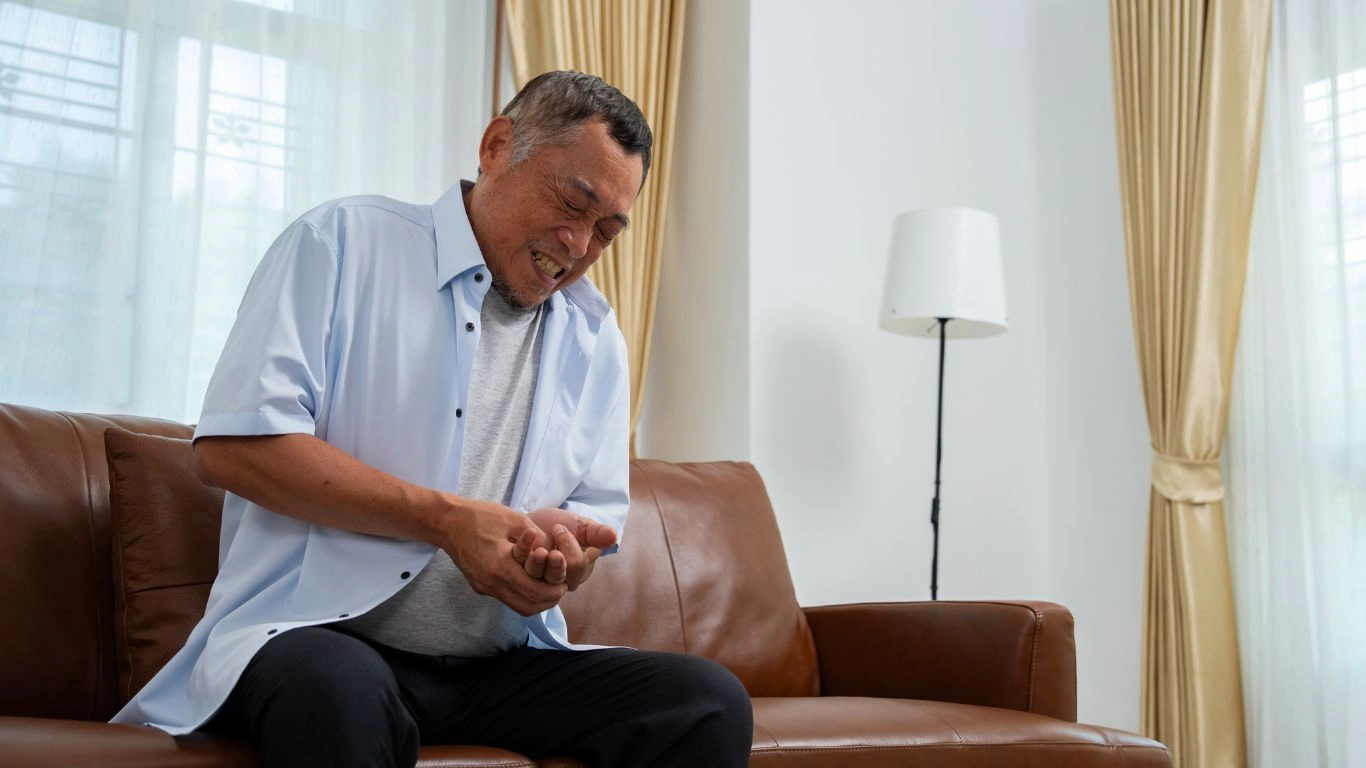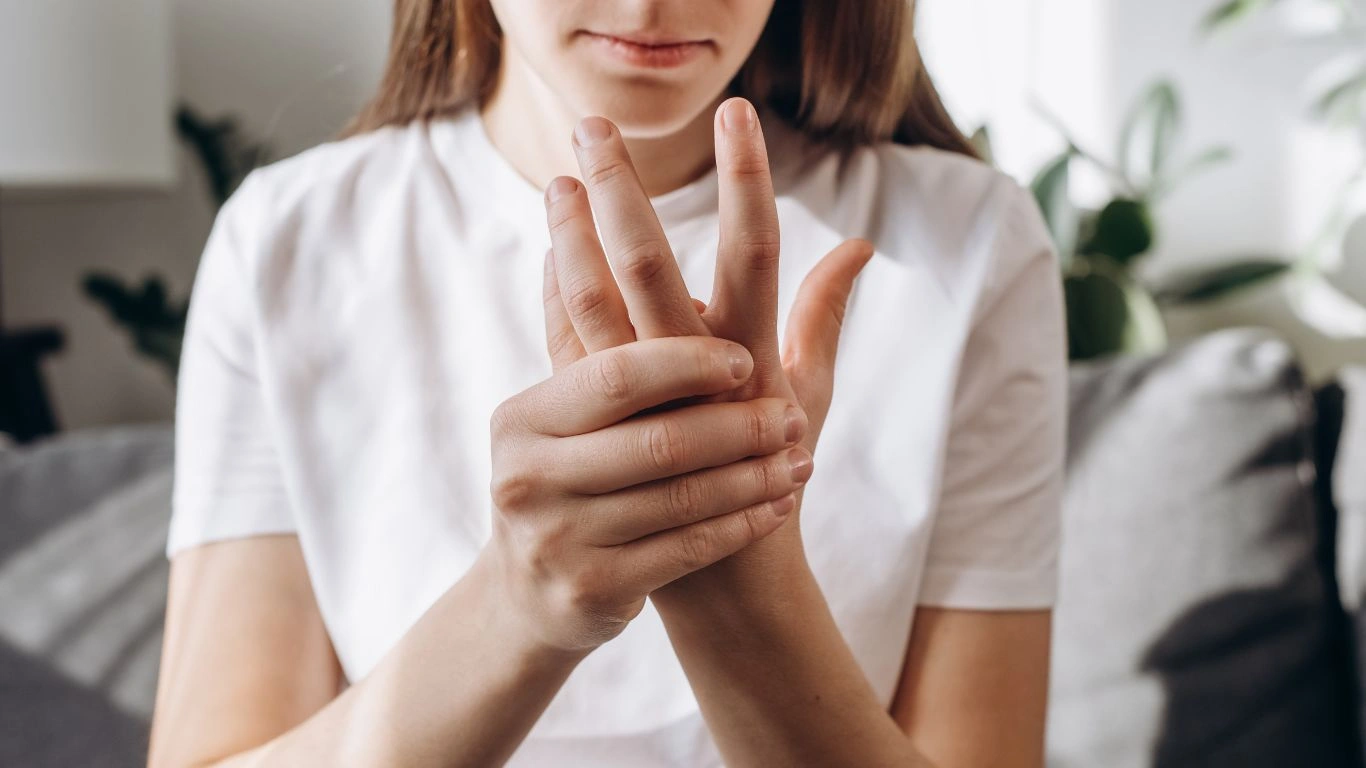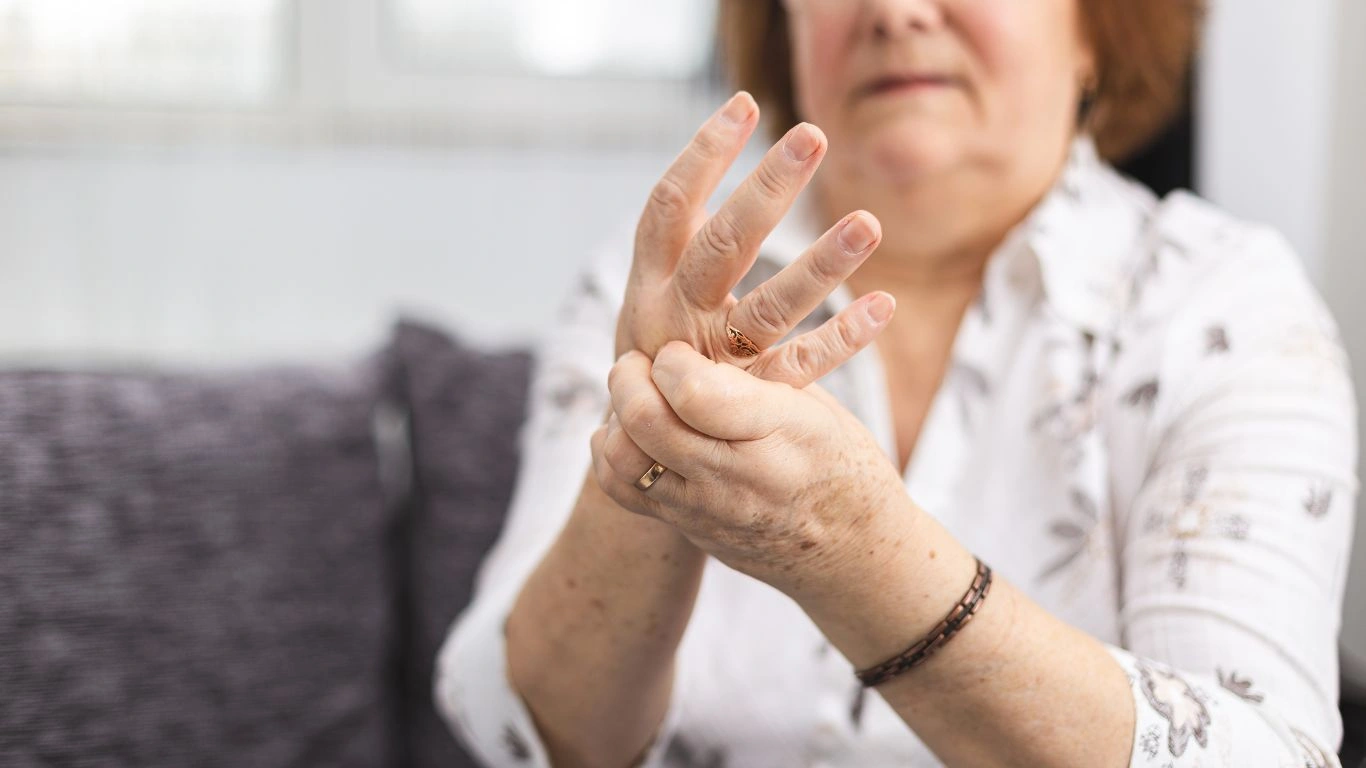Breakthrough Ways to Ease Rheumatoid Arthritis & Regain Joint Flexibility
If you’ve ever watched someone struggle to open a jar or rise from a chair with a grimace, you may have seen the quiet grip of rheumatoid arthritis and its effect on joint flexibility in action. As a rheumatology nurse practitioner, I’ve seen this disease not just as a list of symptoms on a chart, but in the faces and daily lives of people who never imagined their joints could betray them. Joint flexibility is one of those things we don’t really think about—until it’s gone. And when rheumatoid arthritis steps into the picture, it doesn’t just knock; it barges in and starts rearranging everything.
What Exactly Is Rheumatoid Arthritis?

Rheumatoid arthritis (RA) is an autoimmune disease, which basically means the body’s immune system goes rogue and starts attacking its own tissues—especially the joints. It’s not the typical wear-and-tear arthritis (that’s osteoarthritis). RA is more like an overzealous security system that thinks your joints are intruders and sets off the alarms… every single day.
What makes RA particularly tricky is that it tends to attack symmetrically. If it hits your right wrist, chances are your left one won’t be far behind. The inflammation that comes with it can lead to swelling, stiffness, and ultimately, joint damage.
It’s Not Just Morning Stiffness
Many people think RA is all about stiff joints in the morning—and while that’s true, it’s just the tip of the iceberg. The stiffness can last for hours and make simple tasks feel impossible. I remember one patient who couldn’t squeeze toothpaste onto her brush. She was in her 30s, full of energy otherwise, but her hands just wouldn’t cooperate. That’s when you realize joint flexibility isn’t just a luxury—it’s the key to living life on your own terms.
How Rheumatoid Arthritis Messes with Joint Flexibility

RA doesn’t just cause pain—it changes the entire structure of the joint. Think of your joints as a finely tuned orchestra. The ligaments, tendons, synovial fluid, cartilage—they all work together in harmony to give you smooth, fluid movement. RA throws in a blaring trumpet solo that no one asked for and throws everything off.
The Role of Synovial Inflammation
At the heart of RA-related flexibility loss is something called synovial inflammation. The synovium is a thin layer of tissue that lines your joints. In RA, this lining becomes inflamed and thickened, leading to swelling and pain. Over time, that inflammation erodes the cartilage and bone, causing the joint to become deformed and stiff.
Real Talk: What This Looks Like in Daily Life
- Struggling to button a shirt
- Not being able to kneel or squat without pain
- Needing help opening jars or bottles
- Feeling like your hands are in invisible handcuffs every morning
I’ve had patients describe it like trying to move through wet cement. One woman said, “It’s like my body hits pause every morning, and it takes a few hours to press play.” That kind of physical limitation affects not just flexibility but confidence, independence, and emotional health.
What Causes RA to Target Flexibility So Aggressively?

RA isn’t just inflammation for the sake of inflammation. It creates a cycle of damage that reduces range of motion over time. Here’s a breakdown of how that cycle works:
- Immune Attack: The immune system targets healthy joint tissue.
- Inflammation: This causes swelling and pain, making movement difficult.
- Disuse: Because it hurts to move, joints are used less.
- Stiffness & Weakness: Less use means weaker muscles and tighter joints.
- Permanent Damage: Over time, erosion of bone and cartilage locks joints in place.
When someone says they “lost flexibility,” they’re often talking about more than just tight muscles. In RA, it’s a combination of structural damage and protective immobility. The body, trying to protect itself, actually contributes to the very disability it’s trying to avoid.
Why Joint Flexibility Matters More Than You Think

Here’s the thing: joint flexibility isn’t just about being able to touch your toes or twist open a water bottle. It’s about being able to live your life—on your terms. When rheumatoid arthritis and its effect on joint flexibility starts creeping in, it changes the way you move, the way you plan your day, and even how you interact with others.
I’ve sat across from patients who say, “I used to love gardening, but now my knees and hands won’t let me.” One of my long-time patients, who used to be a yoga instructor, told me she couldn’t do the most basic poses anymore. RA doesn’t just affect the joints—it reshapes lifestyles, careers, and even identities.
It’s About the Little Things
When flexibility fades, even the smallest daily tasks can feel like running a marathon. You might find yourself planning your day around your joints—what hurts today, what’s doable, what’s completely off the table. That’s not something you see on a lab result or X-ray, but it’s the reality for so many living with RA.
- Need help putting on socks or tying shoes
- Avoiding stairs whenever possible
- Using adaptive utensils just to eat comfortably
- Feeling mentally exhausted by noon from managing pain
Flexibility is freedom. Losing it, little by little, can chip away at your independence and emotional well-being. That’s why preserving joint movement isn’t just about comfort—it’s about quality of life.
Managing Rheumatoid Arthritis to Preserve Flexibility

Now here’s the hopeful part: while RA is progressive, we’re not helpless against it. A smart, proactive approach can go a long way in keeping those joints as limber as possible. And this is where I lean into my nurse practitioner experience—I’ve seen firsthand what works and what’s just hype.
Medications That Actually Make a Difference
Let’s talk treatment. Most people with RA will need some form of medication. The goal is to control inflammation and slow the damage. There are a few key players here:
- DMARDs (Disease-Modifying Anti-Rheumatic Drugs): These are the foundation. Methotrexate is often the go-to starting point.
- Biologics: These target specific parts of the immune system. Think of them as high-tech immune system managers.
- NSAIDs and corticosteroids: These can help with inflammation and pain in the short term, but they’re not long-term fixes on their own.
It’s all about balance. I always remind my patients that meds are just one part of the puzzle. The real magic happens when we combine medication with movement, nutrition, and mindset.
Movement: Yes, Even When It Hurts
This one surprises people, but gentle, consistent movement is one of the best ways to protect your joint flexibility. I know—when your joints are on fire, the last thing you want is to stretch or exercise. But movement keeps the joints lubricated and the muscles supportive.
Start small. Chair yoga, water aerobics, or simply walking around the house can help. I usually suggest setting a timer—just 10 minutes a few times a day. It adds up and keeps the joints from stiffening into immobility.
Smart Joint Protection in Everyday Life

One of the things I’ve learned from working closely with RA patients is how resilient and creative they are. People come up with incredible ways to protect their joints while still getting things done. Here are some of my favorite real-life joint-saving hacks:
- Use wide-handled kitchen tools and utensils for better grip
- Keep frequently used items at waist height to avoid bending or reaching
- Switch to pump-style shampoo and soap bottles to avoid twisting
- Invest in soft, slip-on shoes with good arch support
And don’t sleep on assistive devices! There’s no shame in using tools that make life easier. In fact, it’s one of the smartest ways to stay ahead of the curve and avoid pushing joints past their limits.
Don’t Wait Until It’s “Bad Enough”
One of the most heartbreaking things I hear is, “I wish I had started sooner.” There’s this idea that you don’t need to act until the pain becomes unbearable—but RA doesn’t work like that. The damage often starts before the pain gets intense. Early action equals long-term mobility. That’s why regular check-ins, even when you feel “okay,” are essential.
Trust me, as someone who’s sat beside hundreds of patients through flares, remissions, and everything in between: prevention and consistency are the name of the game.
Holistic Strategies to Support Joint Flexibility

As we’ve covered, managing rheumatoid arthritis and its effect on joint flexibility isn’t just about prescriptions—it’s about weaving a web of smart strategies that support your joints from every angle. Over the years, I’ve seen patients thrive by blending traditional treatments with holistic habits. I’m not talking about miracle cures, but real-life, doable changes that have meaningful impact.
Food as a Foundation
You’d be surprised how much your plate can affect your joints. RA is inflammation-driven, so eating foods that fight inflammation can really make a difference in stiffness and flexibility. I’m not saying you need to go full-on vegan (unless you want to), but there are some superstar foods that I always recommend:
- Fatty fish like salmon and sardines for omega-3s
- Colorful veggies—especially leafy greens and bell peppers
- Olive oil, nuts, and seeds for healthy fats
- Spices like turmeric and ginger with natural anti-inflammatory properties
One of my patients told me that after cutting out processed foods and adding more whole, anti-inflammatory options, her morning stiffness went from two hours to twenty minutes. It’s not magic—it’s just that the body performs better with the right fuel.
Sleep, Stress, and Your Joints
Here’s something a lot of people overlook: your nervous system plays a huge role in how RA affects you. Stress can trigger flares, poor sleep increases inflammation, and anxiety can tighten your muscles and reduce flexibility even more. I encourage my patients to look at sleep and stress as part of their treatment plan.
- Create a wind-down routine before bed—no screens, warm bath, light stretching
- Try meditation or deep breathing—just 5 minutes a day can help
- Talk to someone—whether it’s a therapist, support group, or a trusted friend
Trust me, when you’re living with RA, managing your emotional well-being isn’t a luxury—it’s essential. The connection between mind and body is strong, especially when it comes to autoimmune conditions.
Staying Ahead of the Curve with RA

One thing I’ve learned as a nurse practitioner is that people who stay proactive with their care tend to have better outcomes. RA doesn’t come with a one-size-fits-all plan, so being your own advocate is key. If something doesn’t feel right—bring it up. If you’re noticing new stiffness or weakness—say something sooner rather than later.
Work With Your Care Team, Not Around Them
Too many folks wait until a flare gets unbearable before reaching out. But RA is like a fire—it’s easier to manage when it’s a spark than when it’s a full-blown blaze. Here are a few things I always remind my patients to do:
- Keep a symptom journal—track what days are good vs. bad and what might be triggering changes.
- Don’t skip labs or imaging—they help us see what the joints might not be saying out loud yet.
- Be honest about your lifestyle—it helps us make the best plan together.
I always say, you’re the expert in how RA feels in your body. Medical professionals bring the clinical side, but your voice and experiences matter just as much—if not more.
Celebrate the Wins (Even the Small Ones)
This journey can feel overwhelming, especially when progress is slow. But I’ve seen the most hope come from celebrating the small victories: walking without a limp, waking up without stiffness, managing a flare better than the last time. Those moments add up, and they’re worth noticing.
One patient started doing 5-minute hand stretches each morning. At her 3-month follow-up, she excitedly told me she could crochet again—something she hadn’t done in years. It’s not just about flexibility. It’s about getting your life back, piece by piece.
References
- American College of Rheumatology
- Arthritis Foundation
- National Institute of Arthritis and Musculoskeletal and Skin Diseases
Disclaimer
This article is intended for educational and informational purposes only. It is not a substitute for professional medical advice, diagnosis, or treatment. Always consult your healthcare provider before making changes to your healthcare plan, especially if you are managing a chronic condition like rheumatoid arthritis.

Tarra Nugroho is a dedicated Nurse Practitioner with a strong foundation in family and preventive care. She brings both compassion and clinical expertise to her practice, focusing on patient-centered care and health education. As a contributor to Healthusias.com, Tarra translates medical knowledge into clear, empowering articles on topics like women’s health, chronic disease management, and lifestyle medicine. Her mission is simple: help people feel seen, heard, and informed—both in the clinic and through the content she creates. When she’s not caring for patients, Tarra enjoys weekend hikes, plant-based cooking, and curling up with a good health podcast.






